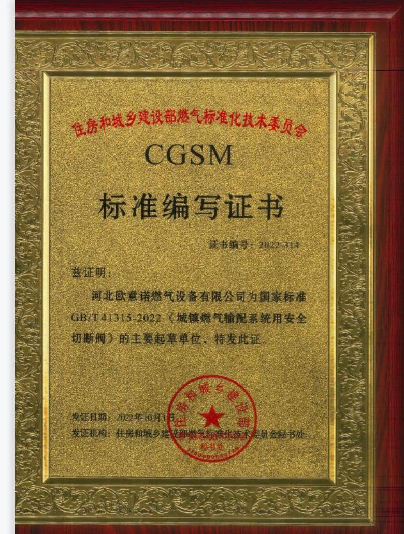
Nov . 07, 2024 16:35
Back to list
Pressure Regulation System for Enhanced Performance and Efficiency
Understanding the Dynamics of Pressure Regulation Systems
In various industrial and scientific applications, the control and regulation of pressure is crucial for ensuring safety, efficiency, and performance. At the heart of these applications lies the pressure regulator, an essential device that helps manage pressure within a system. This article explores the function, types, and importance of pressure regulation systems.
Function of Pressure Regulators
Pressure regulators serve a fundamental purpose they maintain a consistent output pressure regardless of fluctuations in the input pressure. This is vital in systems where pressure variations can lead to inefficiencies, equipment malfunctions, or even catastrophic failures. The primary function of a pressure regulator is to reduce and stabilize the pressure supplied to, or from, various components within a system, ensuring optimal operation and safety.
When a gas or liquid is supplied from a source, such as a tank or a pump, it may have a variable pressure level depending on different factors, including supply source fluctuations or changes in temperature. Without a pressure regulator, downstream equipment—like pipes, valves, and machinery—could be exposed to excessive pressure, leading to overexertion and failure. Therefore, pressure regulators act as a safeguard by lowering the inlet pressure to a desired set point.
Types of Pressure Regulators
.
1. Single-Stage Regulators These are typically used in low-pressure applications where the inlet pressure is not expected to change significantly. They provide a straightforward means of pressure reduction and are generally less complex.
منظم الضغط

2. Two-Stage Regulators Used where a more precise and stable outlet pressure is required, two-stage regulators reduce inlet pressure in two steps. The first stage equalizes the pressure, and the second stage finely adjusts it to the desired set point, making it ideal for applications that demand high accuracy.
3. Back-Pressure Regulators These devices maintain upstream pressure by relieving excess pressure from the system. They are crucial in processes where maintaining a specific pressure level upstream is necessary, such as in chemical processing.
4. Electronic Pressure Regulators Incorporating advanced technology, these regulators can be controlled electronically to provide dynamic pressure adjustment. They are commonly used in applications where continuous monitoring and precise pressure control are necessary.
Importance of Pressure Regulation Systems
The significance of pressure regulation systems cannot be understated. In the medical field, for instance, pressure regulators ensure that gases (like oxygen) are delivered at safe pressures to patients. In the manufacturing sector, they help manage the pressure of gases and liquids within production processes, which can enhance product quality and consistency.
Moreover, pressure regulation systems contribute to energy efficiency. By optimizing pressure levels, these systems can minimize energy consumption, reducing operational costs while promoting environmental sustainability. Regular maintenance and testing of pressure regulators also help in avoiding leaks and preventing unsafe pressure conditions, thereby enhancing overall safety.
In conclusion, pressure regulation is an essential aspect of many systems across various industries. Understanding the types and functioning of pressure regulators allows organizations to implement the most suitable solutions for their operational needs. As industries continue to advance and evolve, the importance of reliable and effective pressure regulation systems will remain paramount, ensuring that processes run smoothly, safely, and efficiently. Whether in critical health applications or routine industrial operations, proper pressure management is a cornerstone of modern engineering and safety standards.
Latest news
-
Safety Valve Spring-Loaded Design Overpressure ProtectionNewsJul.25,2025
-
Precision Voltage Regulator AC5 Accuracy Grade PerformanceNewsJul.25,2025
-
Natural Gas Pressure Regulating Skid Industrial Pipeline ApplicationsNewsJul.25,2025
-
Natural Gas Filter Stainless Steel Mesh Element DesignNewsJul.25,2025
-
Gas Pressure Regulator Valve Direct-Acting Spring-Loaded DesignNewsJul.25,2025
-
Decompression Equipment Multi-Stage Heat Exchange System DesignNewsJul.25,2025

